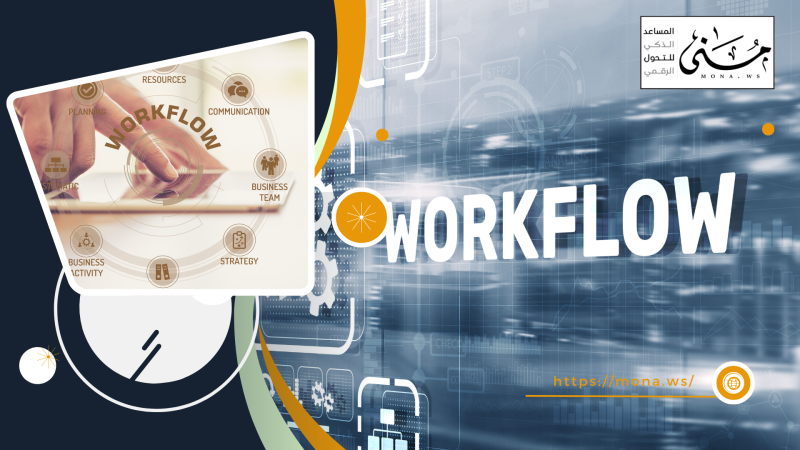At Muna News, we stay ahead of digital developments and provide analytical insights that help readers understand the technologies shaping the future of business and services. Among these technologies, data analytics stands out as one of the most important drivers of progress in an era where numbers lead decisions.
Today, data is no longer just stored tables and numbers—it has become a strategic asset that enables institutions to predict, plan, improve performance, and understand their customers more deeply. Data analysis has therefore become an essential key for anyone seeking a competitive advantage in a rapidly changing world.
📂🔍 What Is Data Analysis?
Data analysis is the process of collecting, organizing, processing, and interpreting data to extract patterns and clear indicators that help make fact-based decisions instead of relying on intuition.
This includes using intelligent tools and software such as:
Power BI, Google Analytics, Python, SQL, and other technologies that transform raw data into meaningful, understandable information.
⚙️📌 Why Is Data Analysis Important Today?
In a world where information moves at the speed of light, decision-making is no longer based solely on experience but on precise digital evidence. This is where data analysis becomes essential:
Understanding Customer and Audience Behavior
Understanding audience behavior is one of the most important outcomes of data analysis. It allows companies and news platforms to discover what users truly prefer and how they interact with content. By tracking readers’ activity on the website and social media platforms, institutions can identify the most-read articles, the most engaging topics, and the patterns that encourage users to stay or leave.
Data also helps reveal trends in product or service demand and analyze the reasons behind performance decline—whether due to unappealing content, technical issues, or shifts in audience interests. Thus, data becomes a precise compass that guides institutions toward smarter, well-informed decisions.
Improving Operations and Reducing Costs
The benefits of data analysis go beyond reading audience behavior—it plays a critical role in enhancing internal operations and boosting efficiency. Data uncovers workflow weaknesses, highlights areas of waste, and helps determine which tasks can be automated to save time and resources.
It also enables organizations to make wiser financial decisions, such as improving inventory management, directing spending to the most effective activities, and reducing operational errors. The result is a faster, more accurate, and less costly work environment that supports institutional growth and competitiveness.
Driving Innovation and Strategic Decision-Making
Data analysis plays a pivotal role in shaping the future of companies by providing predictive insights that help management make evidence-based strategic decisions. By identifying repeating patterns and trends, institutions can discover new opportunities to launch innovative products and services before competitors.
Data also helps improve existing services, identify areas needing development, and explore new markets that have not yet been tapped. This predictive capability gives organizations a powerful strategic advantage in an ever-evolving market.
Enhancing Digital Media Content Quality
In the digital media landscape, data has become essential for building content that truly resonates with readers. Data analysis helps news platforms like Muna News understand the topics that attract audiences the most, determine the optimal publishing times to achieve higher engagement, and improve headlines based on audience preferences.
As a result, journalism shifts from personal judgment to a data-driven system that produces more accurate, impactful, and high-quality content.
Types of Data Analysis
Data analysis methods vary depending on the institution’s objectives. Each type plays a distinct role in converting numbers into actionable insights. The process begins with understanding what happened, followed by identifying the reasons, predicting what might happen next, and finally recommending the best actions. Together, these methods form a comprehensive analytical system that enhances development, innovation, and performance.
📊 Descriptive Analytics
Descriptive analytics is the first step toward understanding data. It provides a clear overview of what actually happened during a specific time period. This analysis reveals metrics such as the number of visitors this week, average session duration, top-viewed pages, or total sales on a given day.
It is the foundation upon which all other analyses are built, as it transforms raw data into organized information that helps institutions understand general patterns. For news platforms like Muna News, descriptive analytics helps identify general engagement levels and daily trends.
🩺🔎 Diagnostic Analytics
While descriptive analytics tells us what happened, diagnostic analytics explains why it happened. This deeper level of analysis investigates the root causes behind changes in performance.
For example, if readership dropped yesterday, diagnostic analytics may reveal causes such as site slowdown, technical issues, changing audience interests, or competing news on social media. By comparing performance patterns and analyzing timelines, organizations can quickly address issues and avoid future disruptions.
🤖📈 Predictive Analytics
Predictive analytics is one of the most advanced forms of data analysis. It uses artificial intelligence and statistical models to forecast future behaviors based on historical data.
It can predict next week’s visitor volume, forecast rising interest in certain topics, or estimate future demand for a product. It is also widely used to identify risks—such as potential system overloads or declining user engagement.
Predictive analytics empowers institutions to act before change occurs, ensuring readiness and continuity.
💡⚙️ Prescriptive Analytics
While predictive analytics answers “What will happen?”, prescriptive analytics answers the more important question: “What should we do?”
This type of analytics provides actionable recommendations based on AI-driven simulations. It may suggest adjusting publishing times, investing more in high-engagement topics, or reallocating budgets for better performance.
Prescriptive analytics is considered the peak of data science, turning insights into real actions that optimize performance with minimal effort.
Real-World Examples of Data Analysis
-
E-commerce companies predict which products will run out before it happens.
-
News platforms identify the topics that attract the most readers.
-
Governments use data to improve public services and resource distribution.
-
Transportation companies optimize routes to reduce fuel usage.
📈🌐 Data Analysis & Digital Media: An Unbreakable Connection
Media organizations that rely on data analysis gain stronger capabilities to:
-
Understand audience interests
-
Publish the right content at the right time
-
Improve search engine ranking
-
Increase engagement and impressions
This is where Muna News stands out by offering content built on accuracy, clarity, and data-driven insights.
Do You Need Complex Tools for Data Analysis?
No.
Any institution can start its data journey using simple, widely available tools such as Excel and Google Analytics. As data volumes grow, organizations can gradually move to more advanced tools like Power BI and Tableau, and eventually to powerful analytical languages like Python for deeper insights.
Ultimately, the real value lies in how these tools are used to make better decisions.
In Conclusion
Data analysis is not a digital luxury—it is the core of competition and innovation in the modern era. Through it, organizations—whether media or commercial—can understand their present, shape their future, and transform numbers into a powerful engine for change.
At Muna News, we are committed to offering content built on accurate data and deep analysis to help readers understand the rapidly changing world around them.











Comments
Add New Comment